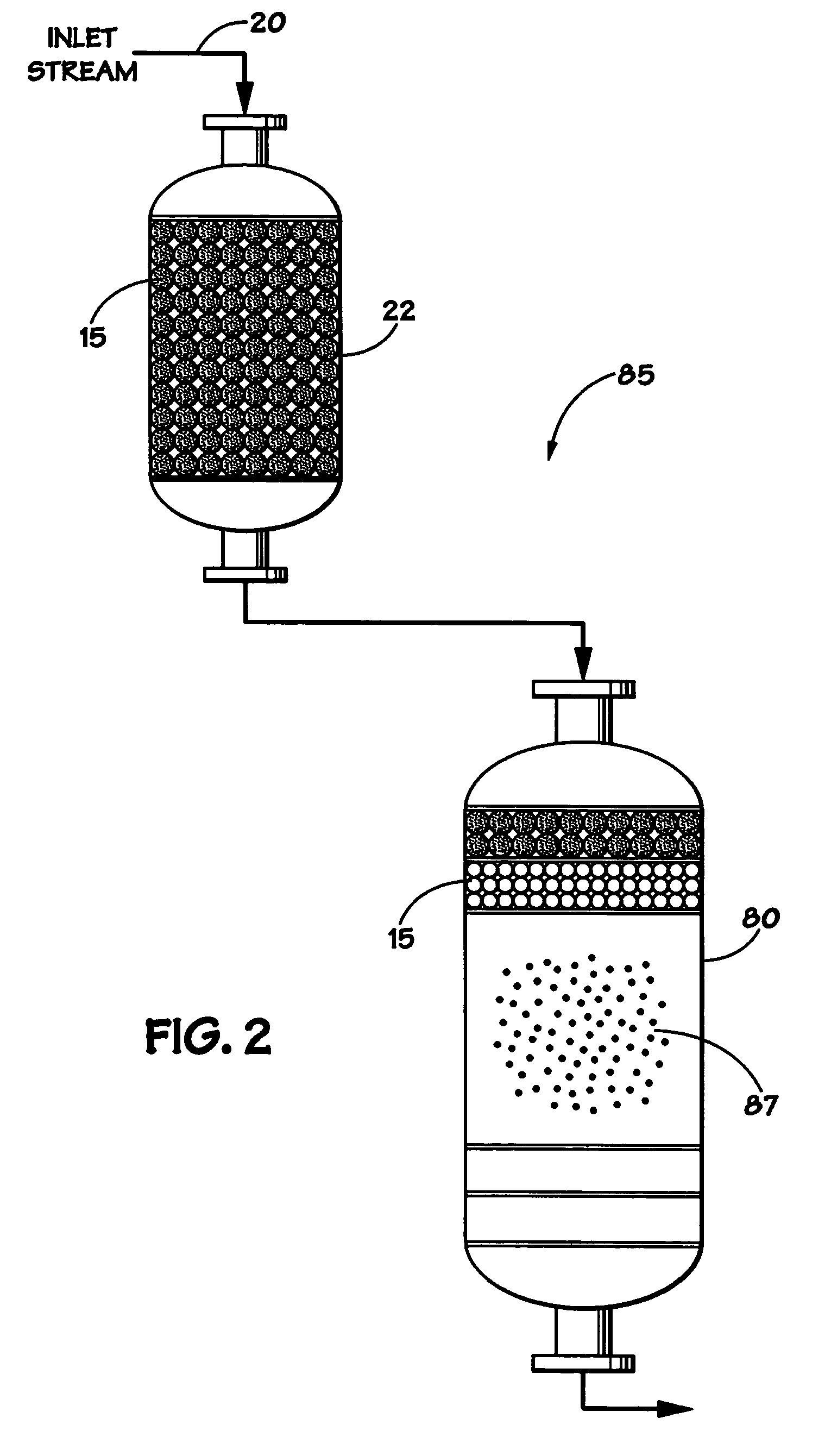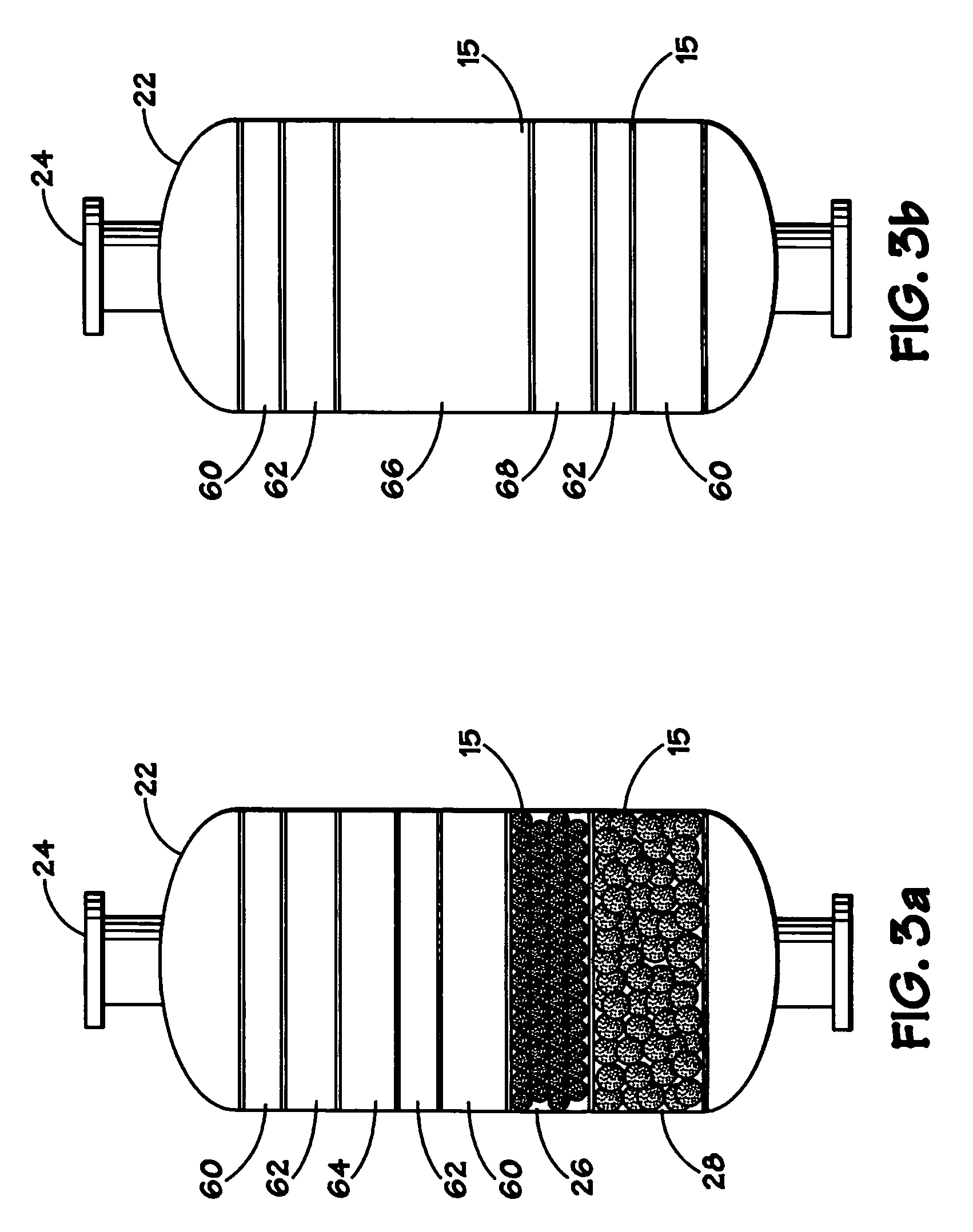Decontamination of process streams
a technology of process stream and filter element, which is applied in the direction of separation process, physical/chemical process catalyst, filtration separation, etc., can solve the problems of contaminated backwash stream, high cost of filtration element and effort to change out or clean these guard filters, and low filtration capacity of fixed filter units. achieve the effect of improving filtration of contaminants
- Summary
- Abstract
- Description
- Claims
- Application Information
AI Technical Summary
Benefits of technology
Problems solved by technology
Method used
Image
Examples
example 1
Use of Reticulated Elements in a Feed Filter
[0056]The use of reticulated elements 15 in a pre-filter vessel 22 in accordance with an embodiment of the present invention was compared with the use of conventional filter media in the pre-filter vessel 22. The reticulated elements 15 of the present invention were installed in a pre-filter vessel 22, as shown in FIG. 3a. Two layers of reticulated elements 26, 28 were installed in the vessel 22. Each layer 26, 28 of reticulated element had a different porosity. Along with the reticulated elements 15, conventional support media, including ⅜″ inert balls 60, ¼″ inert balls 62, and 1.6 mm diameter spent catalyst 64, was also installed in the vessel 22.
[0057]When the prior art filter media was installed in a pre-filter vessel 22, as shown in FIG. 3b, ⅜″ inert balls 60, ¼″ inert balls 62, and spent catalysts 66, 68 were installed in the vessel 22. When in operation with the prior art filter media installed, the pre-filter vessel 22 could only ...
PUM
| Property | Measurement | Unit |
|---|---|---|
| size | aaaaa | aaaaa |
| size | aaaaa | aaaaa |
| size | aaaaa | aaaaa |
Abstract
Description
Claims
Application Information
 Login to View More
Login to View More - R&D
- Intellectual Property
- Life Sciences
- Materials
- Tech Scout
- Unparalleled Data Quality
- Higher Quality Content
- 60% Fewer Hallucinations
Browse by: Latest US Patents, China's latest patents, Technical Efficacy Thesaurus, Application Domain, Technology Topic, Popular Technical Reports.
© 2025 PatSnap. All rights reserved.Legal|Privacy policy|Modern Slavery Act Transparency Statement|Sitemap|About US| Contact US: help@patsnap.com



